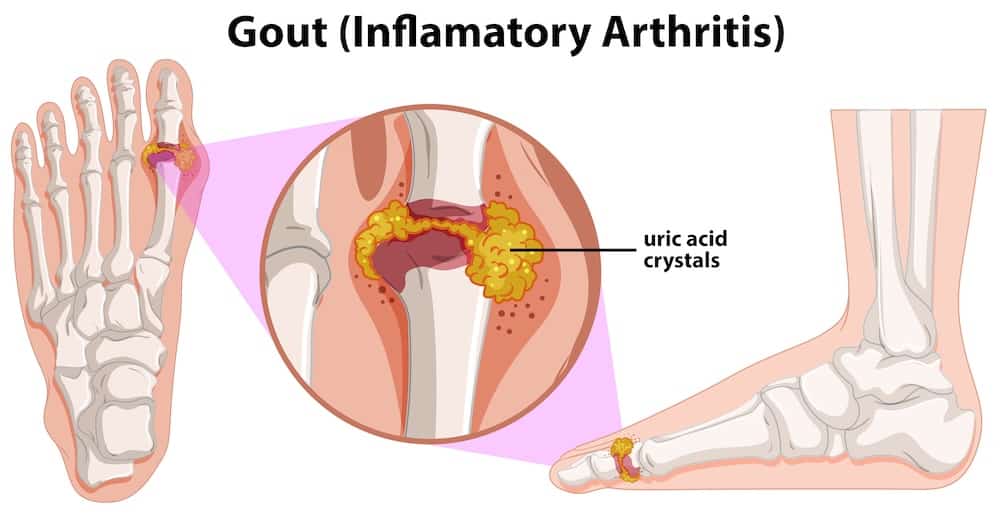Gout is a form of inflammatory arthritis characterized by sudden, severe attacks of pain, swelling, redness, and tenderness in the joints, often the joint at the base of the big toe. An excess of uric acid in the bloodstream, known as hyperuricemia, leads to the formation of sharp urate crystals in a joint or surrounding tissue, causing the painful symptoms associated with gout.
Understanding the signs of gout is crucial for early detection and management, helping to reduce pain and prevent further joint damage. This article will explore the 14 most common signs of gout, offering insights into each symptom with the aim of fostering a better understanding of this condition.
The onset of gout can be quite sudden, often surprising individuals in the middle of the night with the intense pain of a gout attack. With our busy lives and the myriad of stresses we face, it’s easy to overlook the early warning signs of gout until a full-blown attack occurs. However, being informed about these signs can empower individuals to seek medical advice and intervention sooner, potentially mitigating the severity of the symptoms and improving quality of life.
From the intense joint pain that marks the beginning of a gout flare to the lingering discomfort that can affect one’s daily activities, each sign plays a critical role in the diagnosis and management of gout. Let’s delve into these signs, offering an overview of what to watch for and how these symptoms can impact one’s life.
Introduction to Gout

Gout is a form of inflammatory arthritis that develops in some people who have high levels of uric acid in the blood. The acid can form needle-like crystals in a joint and cause sudden, severe episodes of pain, tenderness, redness, warmth, and swelling. According to the Centers for Disease Control and Prevention (CDC), gout affects 4% of American adults, making it a significant health concern.
The condition can affect anyone, but factors like diet, obesity, certain medical conditions, and family history can increase your risk. Recognizing the signs of gout is the first step toward managing this condition effectively. With this guide, we aim to provide you with a clear, empathetic understanding of these signs, fostering early detection and prompt action.
